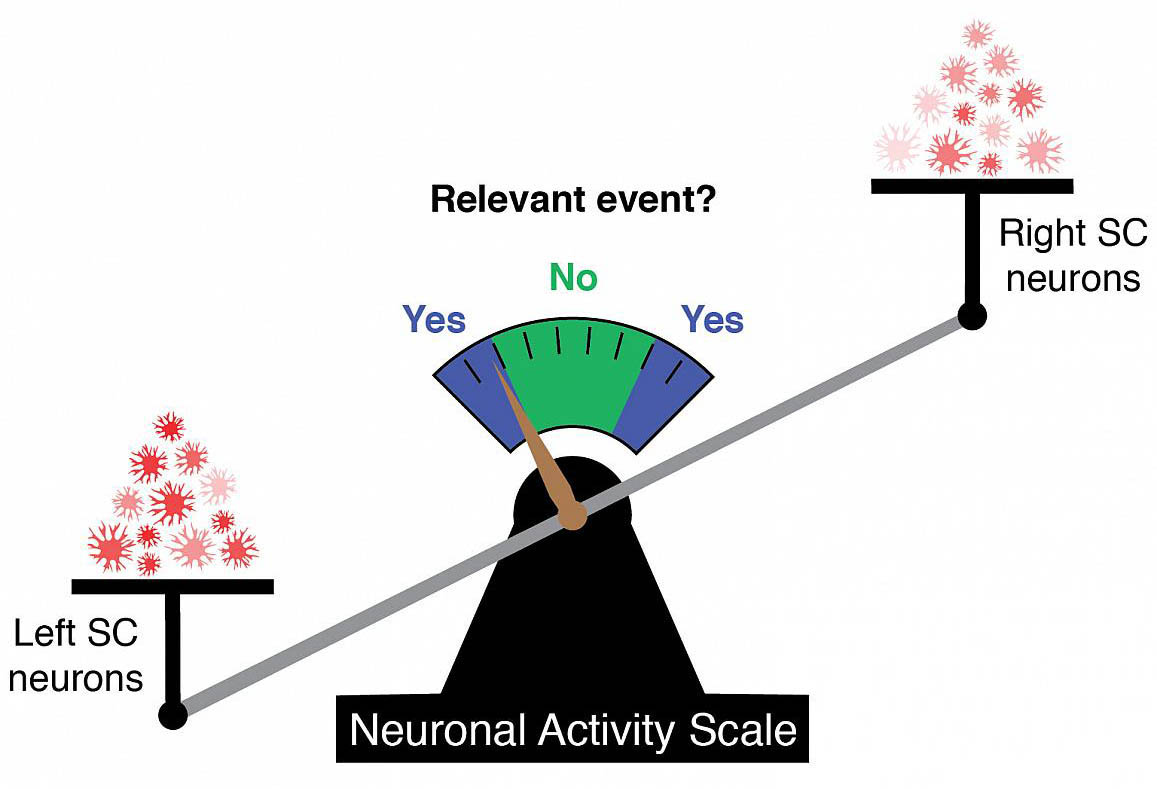IRP researchers discover neural code that predicts behavior
Neurons in an ancient part of the brain encode decisions based on visual information
Scientists at the National Eye Institute (NEI) have found that neurons in the superior colliculus, an ancient midbrain structure found in all vertebrates, are key players in allowing us to detect visual objects and events. This structure doesn’t help us recognize what the specific object or event is; instead, it’s the part of the brain that decides something is there at all. By comparing brain activity recorded from the right and left superior colliculi at the same time, the researchers were able to predict whether an animal was seeing an event. The findings were published today in the journal Nature Neuroscience. NEI is part of the National Institutes of Health.
Perceiving objects in our environment requires not just the eyes, but also the brain’s ability to filter information, classify it, and then understand or decide that an object is actually there. Each step is handled by different parts of the brain, from the eye’s light-sensing retina to the visual cortex and the superior colliculus. For events or objects that are difficult to see (a gray chair in a dark room, for example), small changes in the amount of visual information available and recorded in the brain can be the difference between tripping over the chair or successfully avoiding it. This new study shows that this process — deciding that an object is present or that an event has occurred in the visual field — is handled by the superior colliculus.
“The superior colliculus plays a foundational role in our ability to process and detect events,” said Richard Krauzlis, Ph.D., principal investigator in the Laboratory of Sensorimotor Research at NEI and senior author of the study. “This new work not only shows that a specific population of neurons directly cause a behavior but also that a commonly used mathematical model can predict behavior based on these neurons.”

Greater activation of neurons on one side of the superior colliculus versus the other signals the detection of a relevant event.
This page was last updated on Friday, January 21, 2022